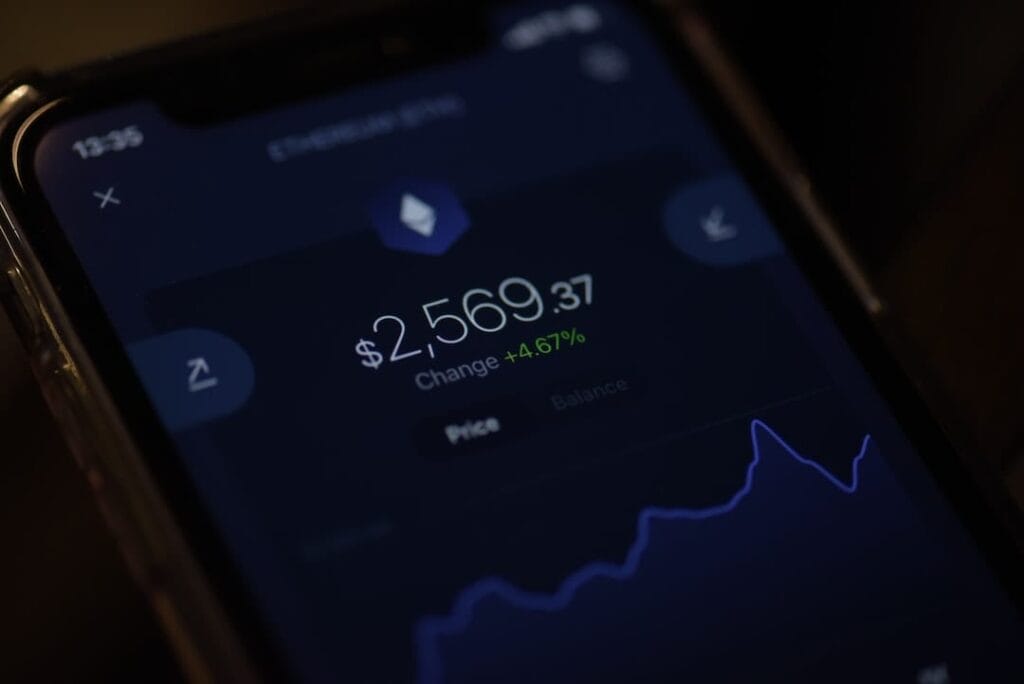Are you interested in earning Bitcoin and generating passive income? Running a node in the blockchain network might be the perfect opportunity for you. By validating transactions and contributing to the security and consensus of the decentralized network, you can receive cryptocurrency rewards. In this article, we will explore how you can earn Bitcoin from running a node and the benefits it offers.
Disclaimer: This information is general in nature and for informational purposes only. It is not personal financial advice and has not taken into account your personal financial position or objectives. Make sure to refer to a licensed financial or tax advisor.
Table of Contents
Key Takeaways:
- Earning Bitcoin through running a node can provide passive income in the cryptocurrency world.
- Validating transactions and contributing to blockchain network security are essential parts of running a node.
- A full node in the Bitcoin network ensures transaction accuracy and investment safety.
- Setting up a full node can be done through various methods, including cloud, local, or pre-configured options.
- Running a Lightning node enables participation in the Lightning Network and opens up possibilities for earning Bitcoin.
The Importance of Validating Transactions in a Cryptocurrency Network
In a cryptocurrency network, such as Bitcoin, the validation of transactions plays a critical role in maintaining security and ensuring the accuracy of the blockchain. Transactions are validated in each node, which can be categorized as lightweight nodes or full nodes.
Lightweight nodes download only key data to speed up the process, allowing for faster transaction confirmations. While this approach improves efficiency, it does not provide the same level of security as full nodes.
Full nodes, on the other hand, confirm all transactions by downloading and fully validating every transaction on the blockchain. This comprehensive validation process helps prevent delays and ensures the integrity of the network.
“Validating transactions is crucial for maintaining security and ensuring the accuracy of the blockchain.”
By validating transactions, cryptocurrency networks can detect and prevent fraudulent activities, such as double-spending, where a user attempts to spend the same funds multiple times. Validating transactions also helps maintain the consensus among network participants and ensures that the blockchain remains reliable and trustworthy.
Moreover, the validation process strengthens the transparency of the cryptocurrency network by allowing anyone to verify the transaction history and account balances within the blockchain. This transparency fosters trust among users and eliminates the need for intermediaries such as banks or financial institutions.
Overall, validating transactions is a fundamental function in any cryptocurrency network, providing security, integrity, and transparency to the Bitcoin network and other cryptocurrencies.
By validating transactions, cryptocurrency networks can detect and prevent fraudulent activities, such as double-spending, where a user attempts to spend the same funds multiple times. Validating transactions also helps maintain the consensus among network participants and ensures that the blockchain remains reliable and trustworthy.
Moreover, the validation process strengthens the transparency of the cryptocurrency network by allowing anyone to verify the transaction history and account balances within the blockchain. This transparency fosters trust among users and eliminates the need for intermediaries such as banks or financial institutions.
Overall, validating transactions is a fundamental function in any cryptocurrency network, providing security, integrity, and transparency to the Bitcoin network and other cryptocurrencies.
Advantages of Running a Full Node in the Bitcoin Network
Running a full node in the Bitcoin network offers several advantages. It increases the security of transactions, especially for users conducting multiple Bitcoin transactions daily. A full node also contributes to the overall security of the Bitcoin network by downloading and validating all transactions, ensuring up-to-date and accurate information. For Bitcoin investors, running a full node helps monitor the health of the blockchain and ensures the safety of their investment.
“Running a full node provides you with a secure and reliable way to interact with the Bitcoin network. By validating all transactions and contributing to the security of the network, you can have peace of mind knowing that your transactions are accurate and your investment is safe.”
Enhanced Transaction Security
By running a full node, you become an active participant in the Bitcoin network, ensuring the security of your transactions. Each transaction is verified and validated by the full node, eliminating the reliance on third parties and reducing the risk of fraud or tampering.
Transaction Accuracy and Data Integrity
Full nodes download and store the entire Bitcoin blockchain, allowing them to independently verify the accuracy of transactions. This ensures that your node is always up to date with the latest information, preventing any discrepancies or potential errors in your transactions.
Monitoring and Protecting Your Investment
For Bitcoin investors, running a full node provides a valuable tool for monitoring the health of the blockchain and ensuring the safety of their investment. It allows you to track the progress of your transactions, verify the state of the network, and stay informed about any potential threats or developments that may affect your investment.
| Advantages of Running a Full Node in the Bitcoin Network | Description |
|---|---|
| Enhanced Transaction Security | By validating transactions, full nodes ensure the security and integrity of your transactions. |
| Transaction Accuracy and Data Integrity | Full nodes download and validate all transactions, ensuring accurate and reliable data. |
| Monitoring and Protecting Your Investment | Running a full node allows you to monitor the health of the network and protect your investment. |
Running a full node not only benefits your own security and peace of mind but also contributes to the overall security and decentralization of the Bitcoin network. By actively participating in the verification and validation of transactions, you play an important role in maintaining the integrity and trustworthiness of the entire network.
Setting Up a Full Node in the Bitcoin Network
Setting up a full node in the Bitcoin network can be done using different methods. Let’s explore the cloud method, local method, and pre-configured method, each with its own advantages and considerations.
Cloud Method
If you prefer a convenient and flexible option, running a node in the cloud is a popular choice. Platforms like Amazon Web Services and Google Cloud provide virtual machine instances that allow you to easily set up and manage your full node. This method eliminates the need for dedicated hardware and offers scalability, ensuring your node can handle increasing demands.
Local Method
For those who prefer more control over their node’s hardware configuration, running Bitcoin Core on your local machine is a viable option. This method requires sufficient disk space, RAM, and a reliable internet connection. By running the software directly on your own hardware, you have full control over your node’s performance and security.
Pre-configured Method
If you’re looking for a plug-and-play solution, pre-configured Bitcoin full nodes offer a user-friendly interface and simplified setup process. These devices come pre-installed with the necessary software and provide an intuitive platform for managing your node. They require less power compared to running your own system and are suitable for users who prefer a hassle-free experience.
Lightning Nodes and Their Role in the Lightning Network
A Lightning node is a software that connects to the main blockchain network and the Lightning Network, a second-layer solution built on top of the Bitcoin blockchain. Lightning nodes differ from Bitcoin network nodes in the way they verify transactions. While Bitcoin network nodes validate every transaction, Lightning nodes only verify transactions that connect directly with the Lightning Network.
Running a Lightning node enables participation in the Lightning Network and opens up possibilities for earning Bitcoin through routing transactions. By serving as a middleman in the Lightning Network, your node can facilitate the transfer of funds between multiple parties efficiently and securely. This allows for faster and cheaper transactions, as they don’t need to be recorded on the main blockchain for every small payment.
“Running a Lightning node allows you to actively contribute to the growth and scalability of the Lightning Network while potentially earning Bitcoin rewards in the process.”
Not limited to Bitcoin, the Lightning Network also extends its capabilities to other cryptocurrencies like Litecoin, further expanding the earning potential of Lightning nodes. By participating in the Lightning Network, you contribute to the decentralization and efficiency of cryptocurrency transactions, while also enjoying the benefits of faster, more cost-effective transfers.
How Lightning Nodes Work in the Lightning Network
The Lightning Network serves as a second-layer solution that enhances the speed and scalability of transactions on the Bitcoin blockchain. Lightning nodes play a critical role in facilitating these transactions by creating payment channels between parties. These payment channels enable users to conduct transactions off-chain, reducing congestion on the main blockchain and allowing for near-instant transactions.
Payment channels form an interconnected network, enabling users to transact with anyone connected to the Lightning Network. This network structure eliminates the need for direct connections between every participant, making transactions more efficient and flexible. By establishing ad hoc peer-to-peer connections, Lightning nodes enable seamless payments between users.
When users want to make a transaction, they can lock up a certain amount of Bitcoin in a payment channel, creating a temporary balance. This balance can then be spent across the Lightning Network, allowing users to conduct multiple transactions without waiting for each transaction to be confirmed on the Bitcoin blockchain. As a result, payments through the Lightning Network are confirmed instantly, bypassing the longer confirmation times associated with on-chain transactions.
To interact with the Lightning Network, users utilize a lightning wallet. A lightning wallet enables users to create and receive transactions within the Lightning Network. These wallets provide a user-friendly interface that simplifies the process of managing payment channels and initiating Lightning Network transactions.
A simplified visualization of how Lightning nodes work:

| Step | Description |
|---|---|
| 1 | Users lock up Bitcoin in payment channels, creating a temporary balance. |
| 2 | The Lightning network forms a network of interconnected payment channels between participants. |
| 3 | Users can initiate transactions within the Lightning Network by routing payments through the interconnected channels. |
| 4 | The recipient of the payment can claim their funds and close the payment channel, finalizing the transaction. |
Earning Bitcoin with a Lightning Node
Running a Lightning node can provide exciting opportunities to earn Bitcoin and actively contribute to the growth and sustainability of the Lightning Network. By taking part in the network as a Lightning node operator, you can profit from routing transactions and earning transaction fees along the way.
One way to earn Bitcoin through your Lightning node is by forwarding transactions from other nodes. As transactions flow through your node, you earn transaction fees for your role in facilitating these transactions within the Lightning Network. The more transactions you successfully route, the more potential there is for earning Bitcoin.
To maximize your earning potential, it is crucial to establish channels with other Lightning Network nodes. By creating well-funded channels, you increase the probability of routing transactions and generating consistent transaction fees. Well-connected Lightning Network nodes have a higher chance of receiving transaction requests, leading to more earning opportunities.
Moreover, several platforms like Tippin.me and Light Tube offer alternative ways to earn Bitcoin by accepting tips or publishing videos through the Lightning Network. These platforms enable content creators and individuals to monetize their creations and receive Bitcoin payments directly through Lightning nodes, expanding their earning potential.
Running a Lightning node leverages the efficiency and scalability of the Lightning Network, providing a rewarding way to participate in the network while earning Bitcoin. The income generated from running a Lightning node may vary depending on network activity, transaction volume, and the efficiency of your node. However, the potential to earn Bitcoin and contribute to the development of the Lightning Network makes it a compelling opportunity for crypto enthusiasts.
Now, let’s take a closer look at how you can set up your own Lightning node and start earning Bitcoin.
| Benefits of Earning Bitcoin with a Lightning Node |
|---|
| Opportunity to earn Bitcoin through transaction fees |
| Contribution to the growth and sustainability of the Lightning Network |
| Access to alternative earning avenues through platforms like Tippin.me and Light Tube |
Setting Up a Bitcoin Lightning Node
To set up a Bitcoin Lightning node, you will need a few materials and follow a step-by-step process. Here’s what you’ll need and how to get started:
Materials Required:
- Raspberry Pi
- SSD (Solid State Drive)
- Umbrel operating system
- Balena Etcher software
Setup Process:
1. Download the Umbrel operating system (OS) from the official Umbrel website.
2. Install the Balena Etcher software on your computer.
3. Insert a microSD card into your computer.
4. Open the Balena Etcher software and select the Umbrel OS image file you downloaded.
5. Choose the correct microSD card and click “Flash” to write the Umbrel OS onto the card.
6. Once the flashing process is complete, safely remove the microSD card from your computer.
7. Connect the SSD to the Raspberry Pi using the provided cables or connectors.
8. Insert the microSD card into the Raspberry Pi’s card slot.
9. Plug in the power supply to the Raspberry Pi to turn it on.
10. Wait for the Raspberry Pi to boot up and initialize the Umbrel OS.
11. Follow the prompts provided by the Umbrel website to complete the setup process.
12. Once the setup is complete, your Bitcoin Lightning node will begin syncing with the Bitcoin blockchain and connecting to the Lightning Network.
With your Bitcoin Lightning node set up, you can now take advantage of the features and benefits it offers, such as routing transactions and earning Bitcoin through the Lightning Network.
| Materials Required: | Setup Process: |
|---|---|
|
|
Operating a Profitable Lightning Node
Operating a profitable lightning node can be a lucrative venture, but it requires strategic management of channels, fees, and traffic flow. By optimizing channels, adjusting fees, and exploring routing possibilities, you can enhance your earnings and maximize the potential of your lightning node. Let’s delve into some key factors that can contribute to the profitability of your lightning node.
Channel Optimization
To ensure a balanced flow of traffic in your lightning node, it is crucial to optimize your channels. The goal is to have a well-distributed network of channels that connect to various nodes in the lightning network. By diversifying your channel connections and establishing relationships with reputable and well-funded nodes, you can increase the chances of routing transactions and earning fees.
Fee Adjustment
Adjusting your fees strategically can attract more transactions to your lightning node and boost your earnings. It’s important to strike a balance between competitive fees that entice users to choose your node for routing transactions and fees that enable you to cover the operational costs of running the node. Keep a close eye on the fee market and adapt your fee structure accordingly to stay competitive and maximize your revenue.
Rebalancing Channels
Rebalancing channels is essential for maintaining optimal routing potential in your lightning node. As transactions flow through your channels, imbalances may occur, leading to reduced capacity and routing limitations. Regularly monitoring your channels and rebalancing them ensures that you can efficiently manage traffic and avoid potential bottlenecks. Employing rebalancing strategies will help you maintain a healthy network of channels and enhance your routing capabilities.
Exploring Routing Potential
Expanding your routing potential involves actively seeking out new routing opportunities within the lightning network. By connecting with new nodes, establishing partnerships, and exploring different routing options, you can unlock additional revenue streams. Keep an eye out for emerging services and platforms that rely on the lightning network for payments, as they can offer valuable opportunities to route transactions and increase your earnings.
Additional Income Streams
While routing transactions is a primary source of income for lightning node operators, there are other ways to generate revenue. Platforms like Tippin.me and Light Tube allow you to earn Bitcoin through tips or by publishing videos through the lightning network. Exploring these platforms and diversifying your income streams can contribute to the overall profitability of your lightning node.
Remember, operating a profitable lightning node requires ongoing management, monitoring, and optimization. By implementing effective channel optimization, fee adjustment, rebalancing, and exploring routing potential, you can enhance the profitability of your lightning node. Additionally, leveraging additional income streams can further bolster your earnings.
The Cost and Challenges of Running a Lightning Node
Running a Lightning node comes with its share of costs and challenges that you need to consider. Let’s take a closer look at what running a lightning node entails and the potential hurdles you may face.
Running Costs
Running a lightning node involves both initial setup costs and ongoing expenses. When setting up your node, you’ll need to invest in hardware such as a computer, sufficient storage capacity, and a reliable internet connection. These upfront costs can vary depending on your needs and preferences.
Channel Fees
As a lightning node operator, your main source of income comes from routing fees based on the transactions you facilitate. These fees vary depending on the network activity, including the number and size of transactions. It’s important to monitor and adjust your fee structure accordingly to ensure you remain competitive and attract traffic.
Fraud Risks
One of the challenges you may face as a lightning node operator is the risk of fraudulent channel closures. This occurs when a user attempts to close a payment channel unilaterally, bypassing the proper protocols. While there are mechanisms in place to mitigate these risks, it’s important to stay vigilant and be prepared to respond to any potential fraudulent activities.
Node Security
Ensuring the security of your lightning node is crucial to protect your funds and maintain the integrity of the network. You need to implement robust security measures to prevent unauthorized access and mitigate the risk of hacks or breaches. Regularly updating your software, maintaining strong passwords, and employing encryption techniques are some of the steps you can take to enhance node security.
Network Attacks
Running a lightning node exposes you to the risk of network attacks. Malicious actors may try to disrupt the network or target individual nodes for various reasons. Implementing robust security measures and staying informed about the latest security practices can help mitigate these risks and keep your node secure.
It’s important to evaluate the potential costs and challenges associated with running a lightning node before making a decision. By considering these factors and implementing appropriate risk management strategies, you can navigate the challenges and contribute to the growth of the lightning network.
| Challenges | Considerations |
|---|---|
| Fraudulent channel closures | Stay vigilant and implement proper protocols to prevent and respond to fraud. |
| Node security | Implement robust security measures, including regular updates and strong passwords. |
| Network attacks | Stay informed about the latest security practices and take necessary precautions. |
Lightning Network Problems and Considerations
The Lightning Network, while offering scalability and faster transactions, does face certain challenges and considerations. Understanding these issues is crucial for participants in the Lightning Network ecosystem.
Routing Fees
Routing fees are a necessary component of the Lightning Network. However, it’s important to note that node operators do not receive direct rewards for facilitating transactions. These fees enable the transfer of payments but are essential for maintaining the integrity and efficiency of the Lightning Network.
Channel Closures
Fraudulent channel closures pose a risk in offline transactions within the Lightning Network. It is necessary to exercise caution and implement adequate security measures to mitigate the potential loss resulting from such closures. Monitoring and actively managing channels can help identify and prevent fraudulent closures, safeguarding the funds transacted through the Lightning Network.
Node Security
Node security is of utmost importance when participating in Lightning Network activities. As private keys are exposed while online, it is essential to implement robust security measures to protect against potential breaches. Using secure hardware wallets and regularly updating software are crucial steps to ensure the security and integrity of Lightning nodes.
Network Congestion
In times of network congestion, the speed of retrieving funds from the Lightning Network can be affected. It is essential to consider that during periods of high activity, transaction times may be delayed. Monitoring network conditions and adjusting routing strategy and fees accordingly can help optimize transaction speed and minimize potential delays.
Consideration of Blockchains and Crypto Tokens
Participating in the Lightning Network requires a thorough understanding of the intricacies of different blockchains and crypto tokens. As the Lightning Network expands to support various cryptocurrencies, it is crucial to consider the compatibility, token standards, and network conditions of specific blockchains when deciding to interact with them through Lightning nodes. Careful due diligence should be conducted to ensure a seamless and secure experience within the Lightning Network ecosystem.
Conclusion
Running a node, whether it is a full node in the Bitcoin network or a Lightning node in the Lightning Network, can provide exciting opportunities to earn Bitcoin and contribute to the security and consensus of the cryptocurrency ecosystem. By validating transactions and participating in the network, you can potentially generate a passive income and actively support decentralized networks.
Whether you choose to run a full node or explore the Lightning Network, both options offer their unique benefits. A full node enhances the security of transactions and ensures the accuracy of the blockchain, making it a great choice for Bitcoin investors looking to monitor the health of their investment. On the other hand, running a Lightning node opens up possibilities for earning Bitcoin by forwarding transactions and transferring payments through the Lightning Network.
Earning Bitcoin through node operation can be a fulfilling and rewarding endeavor, allowing you to be an integral part of the cryptocurrency ecosystem. While the income from running a node may vary, it offers the potential for passive income and actively contributing to the growth of decentralized networks. So whether you’re a cryptocurrency enthusiast or looking for a new way to earn Bitcoin, consider running a node and exploring the exciting world of cryptocurrency rewards.
FAQ
Can I earn Bitcoin from running a node?
Yes, running a node in the blockchain network can provide an opportunity to earn Bitcoin and generate passive income.
What is the role of validating transactions in a cryptocurrency network?
Validating transactions is crucial for maintaining security and ensuring the accuracy of the blockchain in a cryptocurrency network.
What are the advantages of running a full node in the Bitcoin network?
Running a full node increases transaction security, contributes to the overall security of the Bitcoin network, and ensures the safety of investments.
How can I set up a full node in the Bitcoin network?
You can set up a full node in the Bitcoin network by running it in the cloud, on your local machine, or using pre-configured Bitcoin full nodes.
What are Lightning nodes and their role in the Lightning Network?
Lightning nodes are software that connect to the main blockchain network and the Lightning Network, facilitating transactions and verifying transactions in the Lightning Network.
How do Lightning nodes work in the Lightning Network?
Lightning nodes create payment channels between parties, enabling instant transactions and avoiding the long confirmation times on the Bitcoin blockchain.
Can I earn Bitcoin with a Lightning node?
Yes, by forwarding transactions from other Lightning nodes through your node, you can earn transaction fees and explore additional earning opportunities through platforms like Tippin.me and Light Tube.
How can I set up a Bitcoin Lightning node?
To set up a Bitcoin Lightning node, you will need a Raspberry Pi, an SSD, and the Umbrel operating system, with setup instructions available on the Umbrel website.
What do I need to consider for operating a profitable Lightning node?
You need to optimize channels, manage fees, and traffic flow to maximize earnings, as well as actively rebalance channels and explore different routing options.
What are the costs and challenges of running a Lightning node?
Running a Lightning node has associated costs such as hardware and ongoing expenses for a reliable internet connection, and it also involves risks like fraudulent channel closures and potential security breaches.
What are some problems and considerations with the Lightning Network?
Some considerations include routing fees, risks related to channel closures and node security, and the intricacies of different blockchains and crypto tokens.
How can running a node help me earn Bitcoin and contribute to the cryptocurrency ecosystem?
Running a node, whether it’s a full node in the Bitcoin network or a Lightning node in the Lightning Network, provides opportunities to earn Bitcoin, generate passive income, and participate in decentralized networks.
What other opportunities are there to earn passive income from cryptocurrency?
Running a node for Bitcoin can provide passive income opportunities but there are others ways too. These include crypto lending platforms, crypto staking and yield farming for users to earn from their digital assets. Or, you may want to check out earning from crypto faucets or games that earn you crypto assets. By supporting the network, running a node can contribute to the security and decentralization of the Bitcoin network, potentially leading to potential sources of income.







